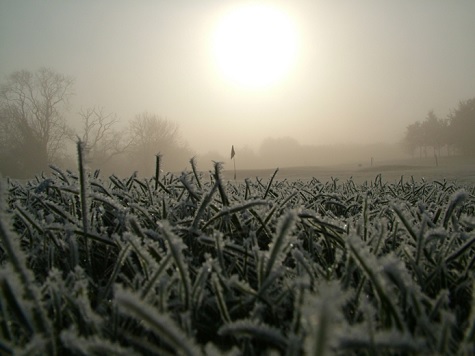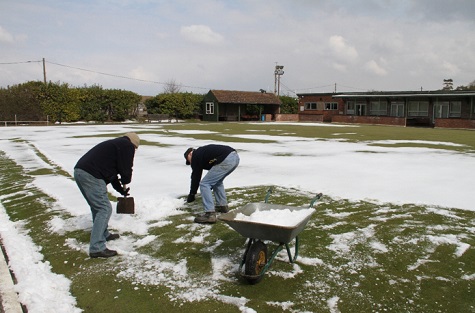This week I thought it would be good to again broach the subject of the weather. Some parts of the country have been getting a dollop of snow, with regional weather forecasts hinting that we wintery conditions are in effect across the country.
Air and soil temperatures have dropped dramatically recently, shifting from double figures down to low single figures.

According to research by the Met Office, we are more likely to see snow between January and March than in December, with snow or sleet falling an average 3.9 days in December. Many of us might be dreaming of a White Christmas, but climate change has sadly meant the chances of snowfall over the holidays are slim.

In fact, the last widespread White Christmas in the UK was back in 2010 and was described by forecasters as "extremely unusual". Not only was there snow on the ground at 83% of stations (the highest amount ever recorded), but snow or sleet also fell at 19% of stations. More recently, however, 2020 was recorded as a White Christmas after parts of East Yorkshire and Suffolk woke up to a beautiful dusting of white.
These wintry conditions usually bring periods of frost which when heavy cause frozen ground conditions.
Turf is especially prone to damage when it is frozen or when the ground is thawing. Normal practice is for a golf course to remain closed until the ground has completely thawed, which often occurs by mid-morning.

What happens to turf in frost conditions?
Frost on the grass leaf blades tells us that the water inside the leaves is frozen. Remember that 80+% of plant tissue is made up of water, the primary component of plant tissue. When this water is frozen, foot traffic on the turf causes the ice crystals in the cells to puncture through the plant's cell walls, thus killing plant tissue.
When they are frozen the leaves of the turf get easily bruised by player's feet. After thawing, the affected turf turns black or brown and becomes sparse. The turf can often remain thin for long periods if damage occurs early in the winter. The fine turf on greens becomes more susceptible to disease and the putting surface becomes very uneven.

More long-term damage can be caused when play takes place as the turf is thawing after a prolonged freeze. Under these conditions the top surface of the turf may be soft, but the underlying soil can still be frozen. Root damage occurs easily from a shearing action as player's feet move the soft top surface against the frozen sub soil.
The process of damage to the turf normally occurs in the following pattern:
- Bruising and damage to the leaf.
- Loss of turf colour.
- Severing of grass roots.
- Compaction of the soil.
- Thinning of the swards.
Each time you continue to allow play on frosty greens you continue to promote further turf decline. Low soil and air temperatures prevent turfgrass recovery.
However, many golf clubs do operate a favourable frost policy, whereby a number of contingencies are put in place to reduce frost damage on the course and allow golf to be played during frosty conditions, some of the methods used by clubs include:
- Many clubs are now using artificial winter tee mats, which are brought out for the winter period.
- Temporary green areas have been mown out and introduced for winter play.
- The course is inspected every morning by the greenkeeping staff who then make a judgement on whether the greens / or which greens are playable depending on the severity of the frost.
Often if the frost is a haw frost, it is likely that many of the greens will be playable by late morning once thawed. In most cases frost damage will not be noticeable until the spring when long term damage has already occurred. A poor thin sward, a heavy compacted green and a poor putting surface are all consequences of play being allowed on frosty courses.
The best policy is for a club to inform club members / players of the reasons why greens and courses must be closed during heavy frosts. Explaining these facts to the members and players will help them understand the longer-term benefits of maintaining the sward quality of their greens.

As for other winter sports facilities such as football, rugby a heavy frost may result in the postponement of fixtures and training sessions. It is important that the grounds staff have a say if these pitches are playable.
And if we do indeed get a heavy snow fall, most playing surfaces will no doubt become unplayable. The shear effort of removing snow from a bowling green can be a mammoth task.